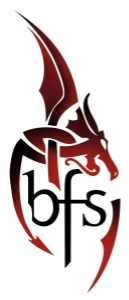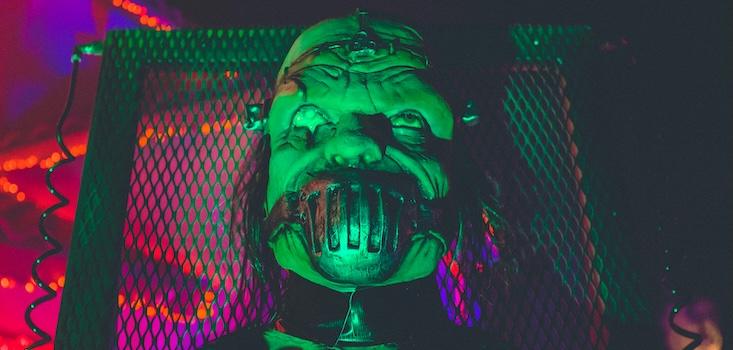M F Alfrey—known for his creepy crawlies and body horror terror novels—looks at what makes a creature truly fearsome, and how you can create your own. This article features the author’s own artwork, showing how he developed the monsters in his novel Silentium.
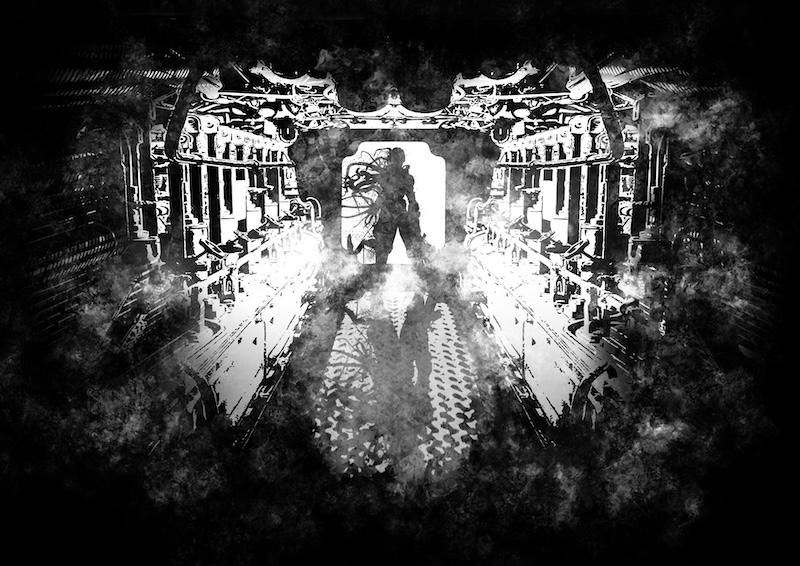
Less is more
What makes a truly unsettling monster? Of course, the answer is subjective, but as writers we can prey on the fact our readers are human (probably) and, as humans, we share the same base fears. A fun documentary by YouTuber Vsauce,What Is The Scariest Thing?, concludes that fundamentally everyone shares a fear of increased CO2 levels. Although, they are not aware that is the root fear. Generally, they attribute the fear to something more palpable like drowning, or smothering, etc.
So, we’re inducing suffocation in our readers? Sounds impossible, but luckily writers have the seemingly arcane power to conjure the Theatre of the Mind. Imagination, especially when it comes to fear, is a powerful tool. When I spawn a creature and let it loose in my writing, I take inspiration from film. I’m talking of those horror flicks that only allow glimpses of the creature before a grand reveal, capitalising on the idea that less is more.
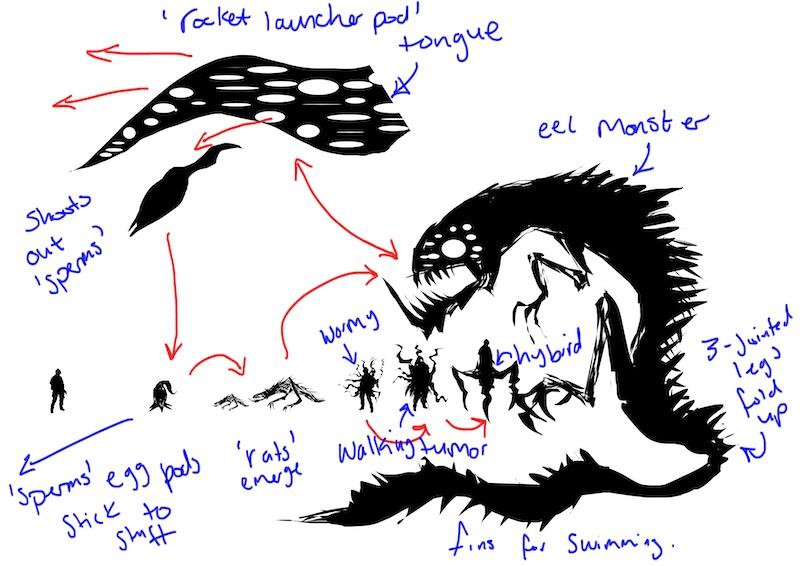
You may have noticed the sperm shooting rocket tongue, cos let’s face it, it’s kinda gross.”
Drip… drip…drip…
In terms of deploying the monster, I like to start with rumour—such as gossip between space truckers; what they’ve heard, the aftermath they’ve seen. Each time, I drip in clues as to which type of creature it could be, encouraging the readers to be like the characters and take wild guesses. Tropes can be used to misdirect or shepherd the reader towards a certain image you have in mind. But at this stage, it’s still intangible. Usually, what we imagine is far worse than reality. So, it pays to keep it vague for a time.
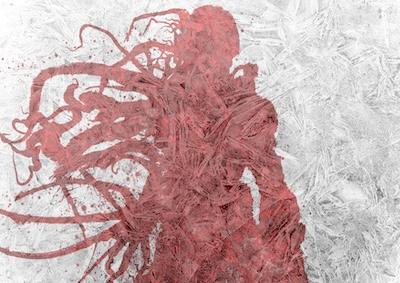
Next, the characters might encounter some deserted place, like in my recent sci-fi body horror, Silentium. The abandoned facility under the ice is essentially a haunted house. In this location, evidence of the creatures is shown through the crew’s eyes. That ominous slow drip. Blood here, weird viscera there. The reader concludes, yep, this thing is real. It exists, and could still be here, waiting in the shadows.
(Pictured: “The bloody soldier was the original cover artwork. Developing this image helped me picture the monster more solidly for the descriptions in the novel.”)
We then ramp it up with a first encounter. Only a glimpse. A flash of undulating flesh caught in torchlight, a shadow skulking in the darkness, an alien sound, a rancid smell. Something that is triggering in the real world. Something based on demonstrated fears. Again, more imagination is slopped on. The characters, and hopefully the reader, begin to panic. Finally, the creature is revealed and all of the puzzle pieces, the smells, the sounds, the physical evidence (slime, blood, peculiar goop) come together and the reader witnesses the glorious horror. I like to keep it in the shadows just a little bit. The xenomorph in Alien, for example, is far more terrifying in the dark than it is in Alien: Covenant where it appears in broad daylight.Â
Get under the skin of your monster (and your reader)
(Pictured: “Concept art for the “eely†offspring that emerges from the “sperm†egg pods. Originally, it was going to be mutated rats, but after creature development, eel-monsters seemed a more logical step for Silentium.”)
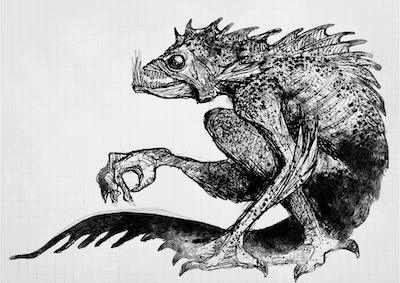
Okay, but how does one actually make a monster? Well, I come from a visual arts background, so I sketch it before, during, and after the first draft. I do an initial terrible sketch, then maybe write a detail that wasn’t in the original drawing, so I add it to the sketch. I’ll do a final sketch with all the edits and additions from the final draft. I’ll think, oh this needs more teeth, more tentacles, because it just looks cooler. That’s a great way to embellish a creature.
Horror is a visceral thing. Something we feel internally. Yet it is triggered by the external. The visual, the uncanny. For Silentium, I drew inspiration from Alien and The Thing. I wanted to write a modern homage to those creatures I love so much. I hit the drawing board and researched the monster market and what scares us. I already established that being unable to breathe (increased CO2) is a universal fear. Of course it’s brought on in many ways. My research led me to wordlists like: smothering, suffocating, constricted spaces, nausea, claustrophobia, drowning … you get the idea. In the case of Silentium, the setting for the horror is a facility under the ice, in a freezing dark ocean. Constricted space, claustrophobia, and drowning – check.
Make it gross – Like, really gross
My main monster was always going to be infectious. Some disease-ridden thing that distorts the human form. Initially I went with fluid contact and bites, but eventually, taking in the suffocation element, I went with spore. This way, the characters and reader don’t even want to breathe. If I’m lucky, the reader will hold their breath while reading certain scenes. Spore research led me to a fear called trypophobia: The fear of clusters of small holes, perforations, or bumps. In this case, something for the spore to be released from. Visually gross—perfect!
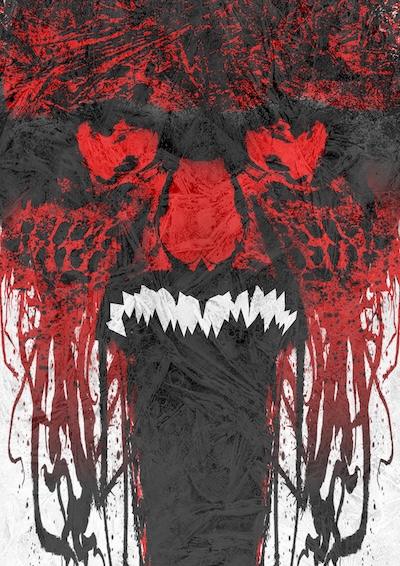
What about the smothering? For that, I created the “meat sheetâ€. I don’t want to give too much away, but rest assured, the seed idea of a sentient sheet of smothering flesh was enough to get it into the story. I added a few trimmings of course: human body parts in all the wrong places, being used for all the wrong things. A good dose of gross bodily fluids always works too. Plenty of oozing, pustulous flesh. Though, it was only towards the final draft I noticed one of the underlying themes in Silentium: cancer. The main creature looked and behaved like a tumour. Another prevalent fear. So, what is scarier than a tumour? I asked myself. Well, a giant one that can think, move, and stalk you, that’s what. This line of research led me to teratomas that may contain teeth, hair, bone, or muscle. Again, visually disturbing. So, I went back into the text with that in mind and tweaked with morbid fervour.Â
(Pictured: “The screaming tumour monster was developed for the front cover. Creating this cover inspired changes to monster descriptions.”)
The perfect organism
There isn’t a blueprint for the prefect organism, though. Nor would you want one. However, if we dig deeply into our buried fears, the journey down unearths the bones of what scares us. Tapping into your own fears, and understanding where they come from and why, is the key. Couple those with imagination and the ultimate fear of not being able to breathe, and I think you’re onto creating a truly terrifying monster.
